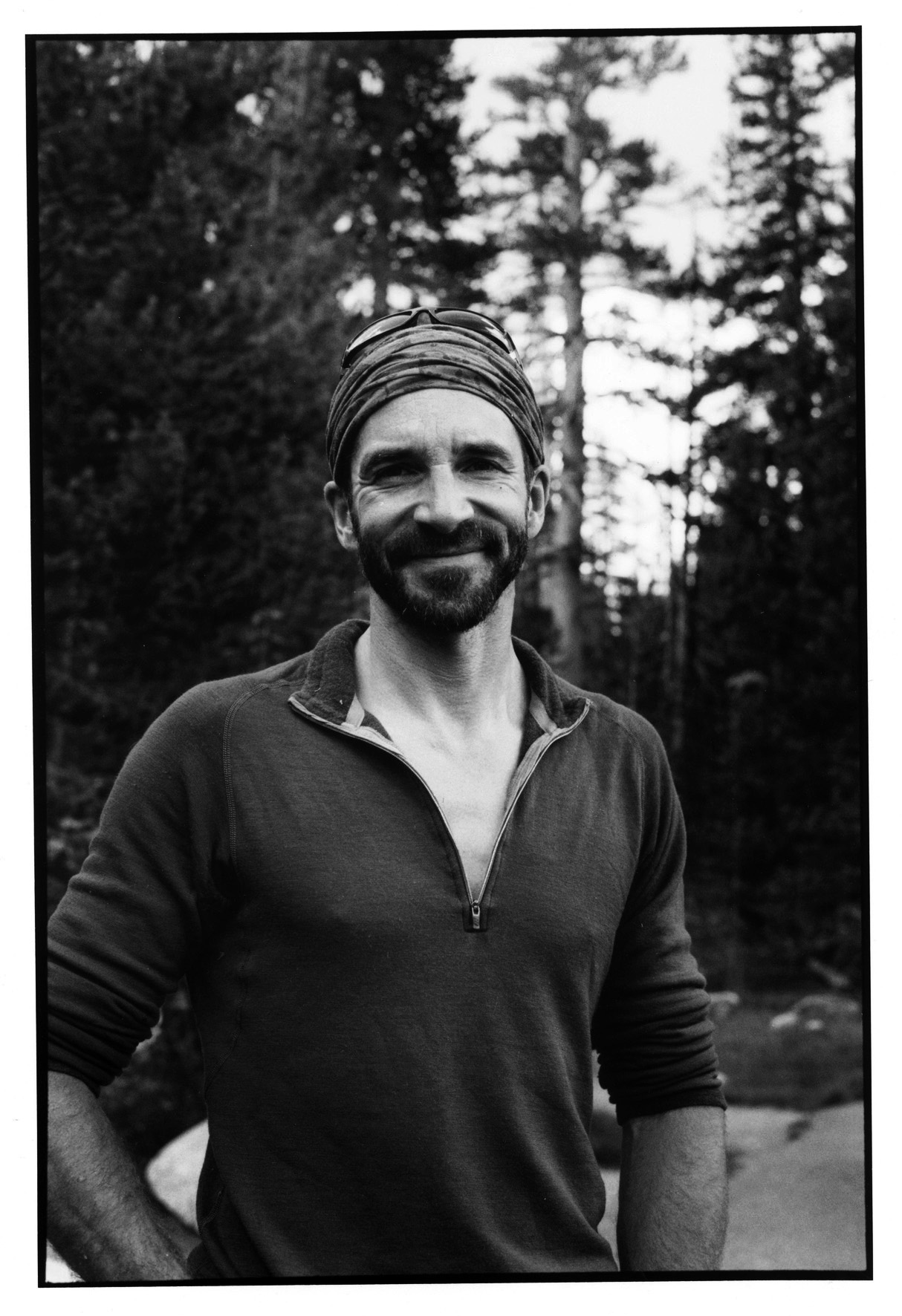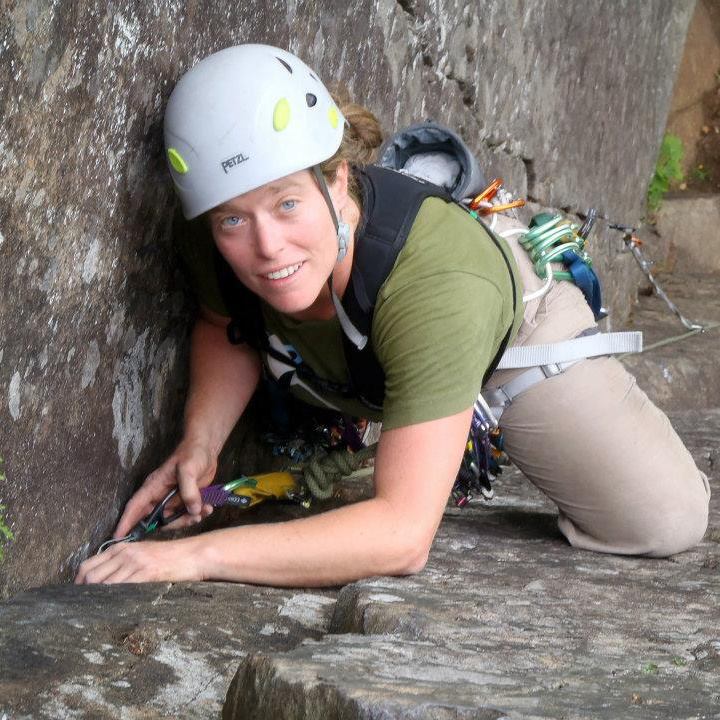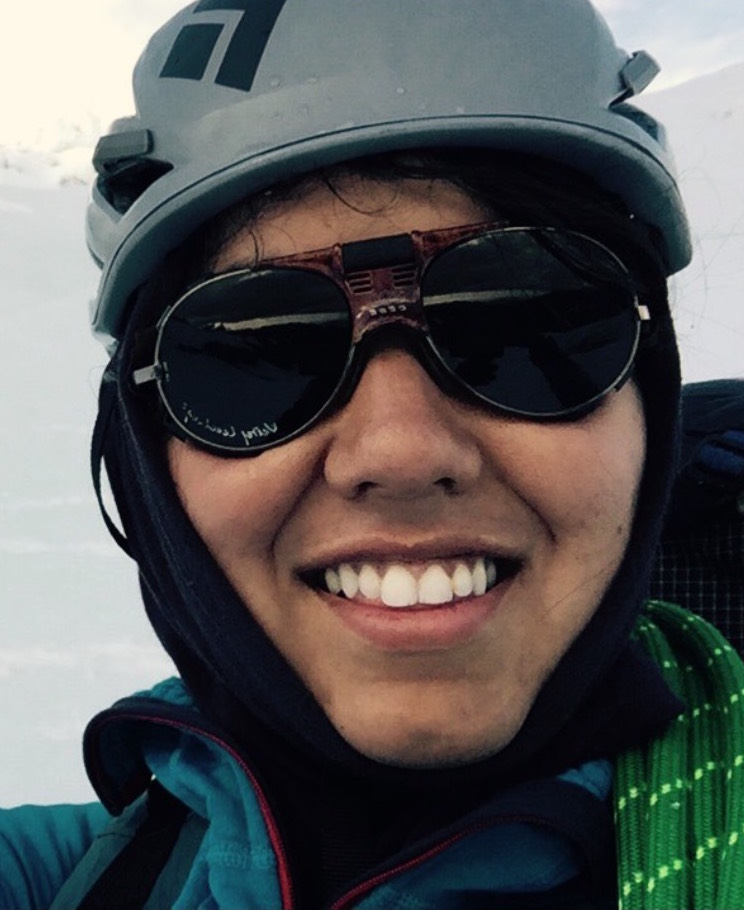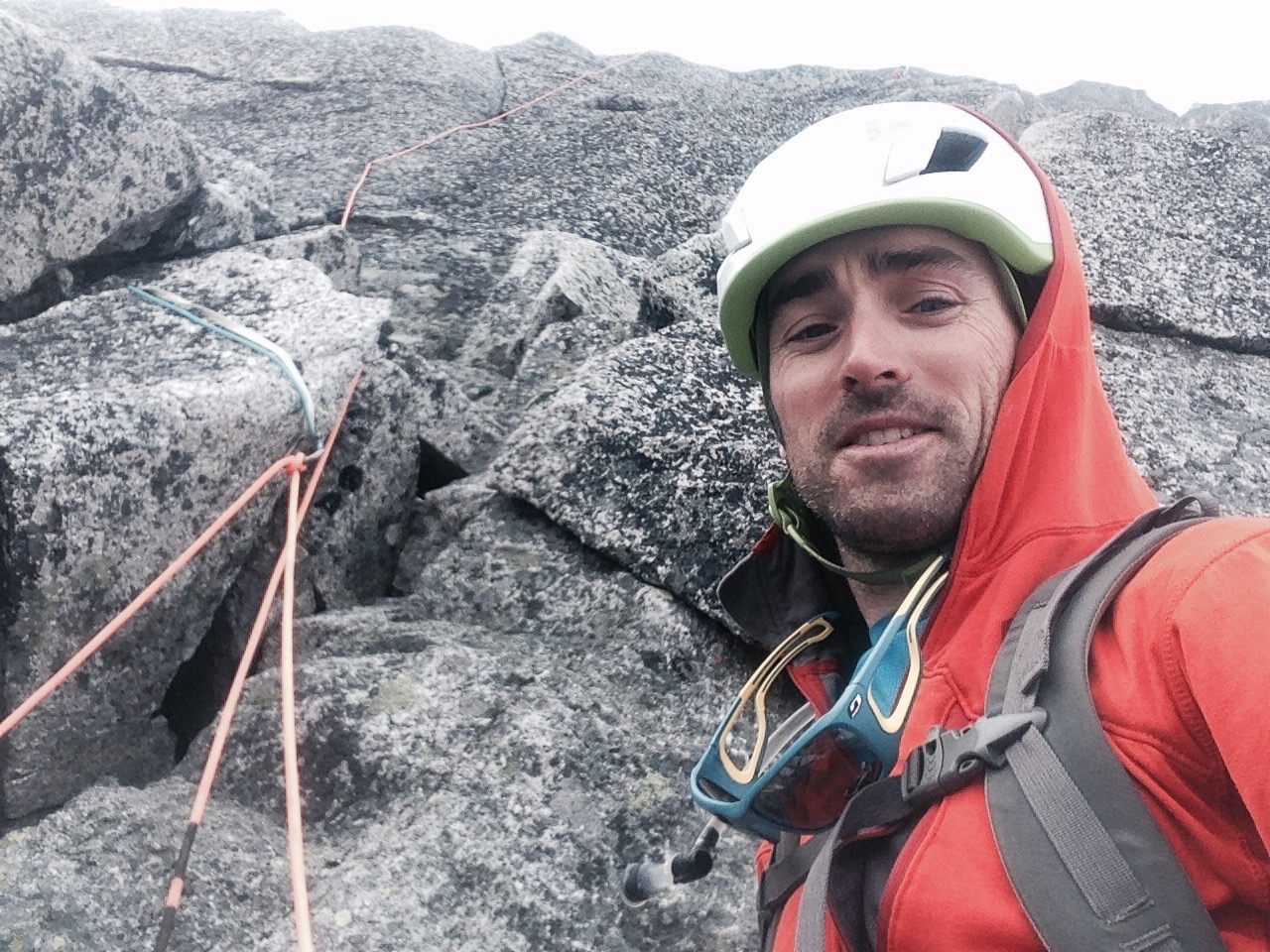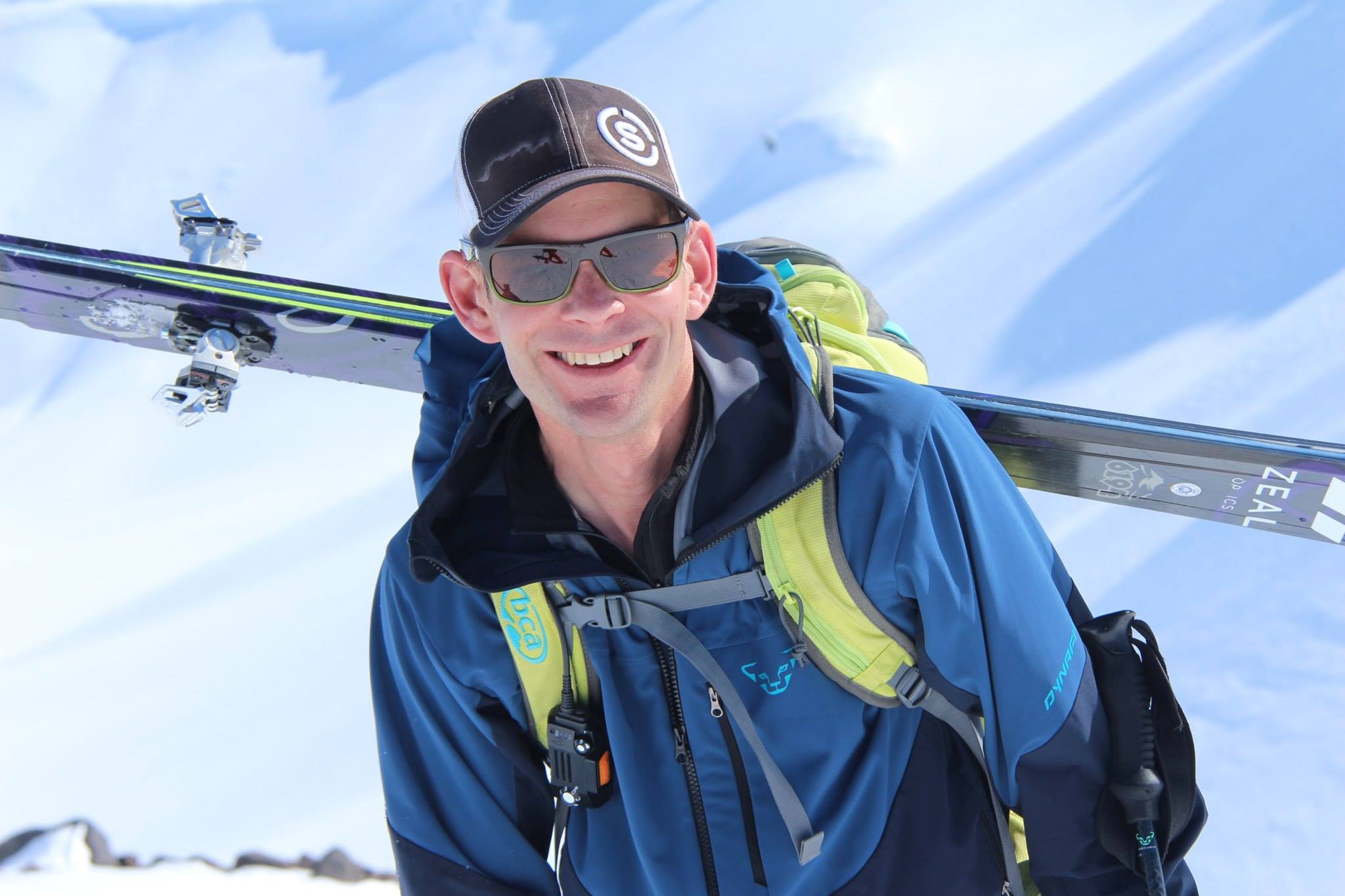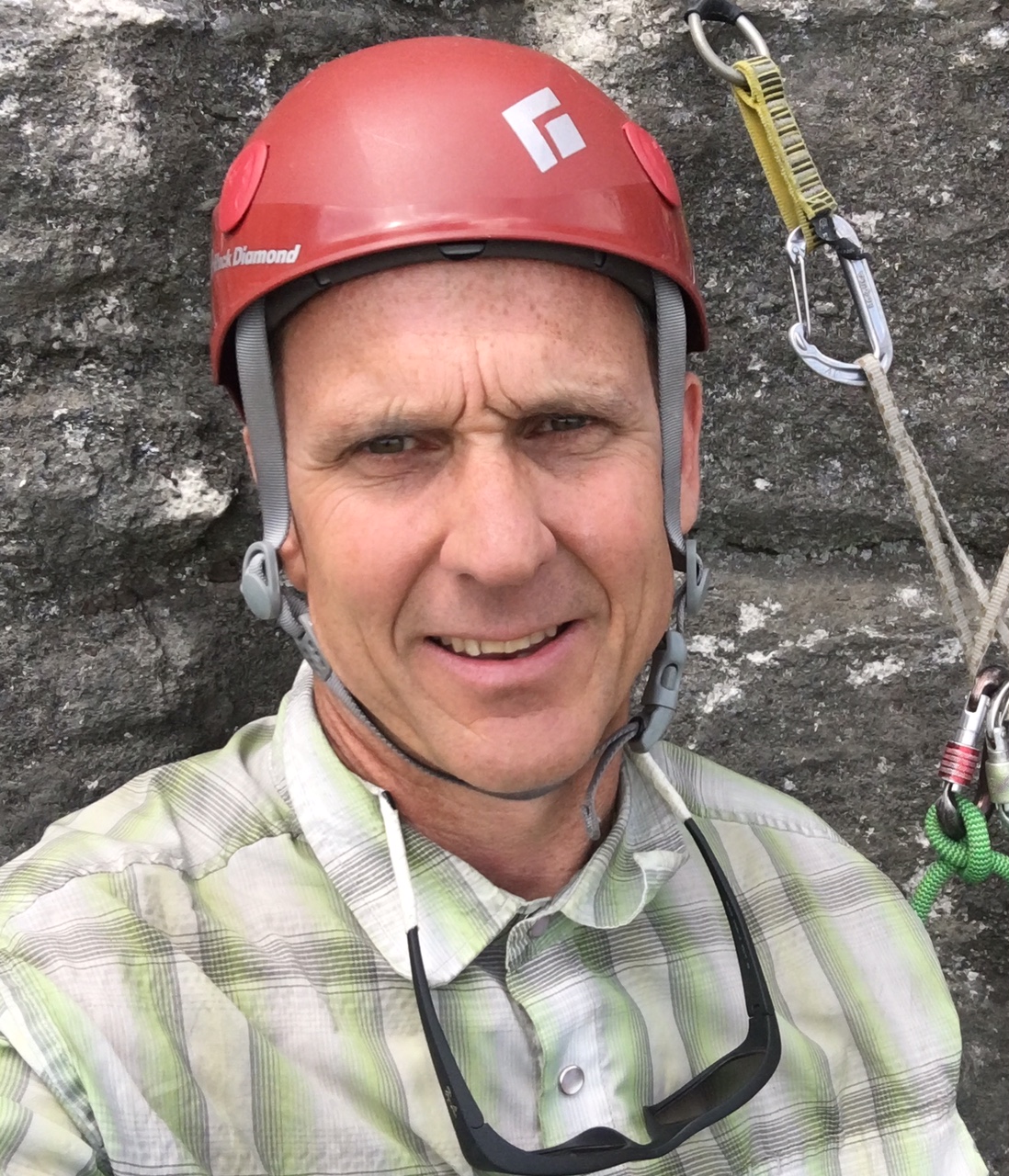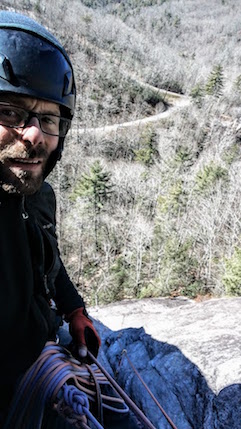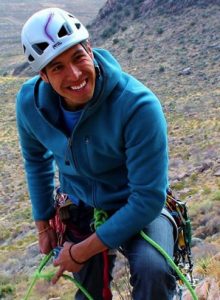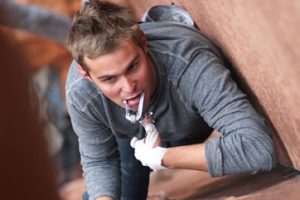Marmot Scholarship Advanced Alpine Guide Course/Aspirant Exam
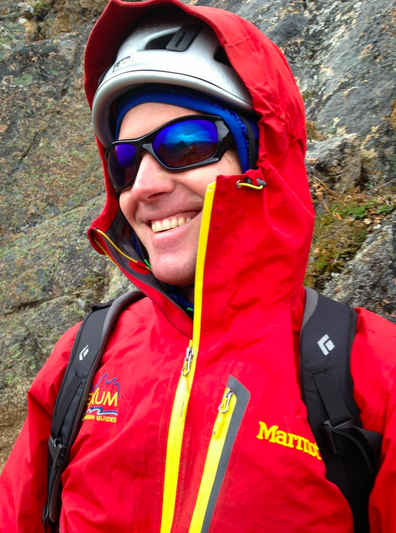
Brian Smith enjoying the benefits of Marmot’s sponsorship of his scholarship.
By Brian Smith
First of all, I would like to extend a huge thank you to Marmot and the AMGA for their support in offering me a scholarship for this course and aspirant exam. The burdens on guides in our country continue to grow, and your generosity is much appreciated.
The physical and mental preparation for this course was as exhausting and rewarding as the course itself. Mentally, I spent hours wrapping my mind around guidebooks, maps, Mountain Project, Google Earth, and tour plans of tours we never embarked on. The food preparation was fairly simple: A bunch of Mountain House meals, energy bars, snickers (high caloric value), PB&J’s, oatmeal, and lots of coffee (to wash down the oatmeal). And then there was the gear preparation: Two Tents, two sleeping bags, two down jackets, two rain jackets, two rain pants, two ice axes, one ice tool, two pairs of crampons, three ropes, etc! It is interesting to note that our examiners brought multiples of every type of gear imaginable as well. It is certainly better to be prepared for the unforeseen.
My physical preparation basically entailed guiding for Exum Mountain Guides six days per week for three months straight in the Tetons and the Wind River Range. I had a four-day trip into the Cirque of the Towers in August with a reasonably heavy pack (I brought a bigger pack on purpose to train), which actually made my overnight pack on the course feel light. My fellow examinees teased me about my “daypack.” Light is fast, and speed is safety are words I live by in the mountains.
I also spent hours in the garage rehearsing the 45-minute rescue drill. I think I had the time down to 23 minutes at a casual pace in the garage, but the garage is not a real cliff. So, I met another guide named Sebastian Grau in Index, Wash., to climb and practice the drill again just before the course started. Fortunately, our cars were not broken into while climbing. Apparently, every single car in the parking lot had windows smashed the previous weekend!
The first day of the course was spent at Mount Eerie, south of Anacortes, Wash. We spent the day rotating through a series of timed drills, including the 45-minute rescue drill, five minute knot pass, timed fourth class circuit with mountaineering boots on, a timed 5.8 climb with mountaineering boots on, and a timed 5.10 sport climb on lead. Passing all of these tests is a prerequisite for continuing on the course.
AMGA courses in the Cascades are jokingly referred to as the “driving courses,” so that evening we researched our next venue, bought supplies, and drove over Washington Pass to a campground near the Silver Star trailhead. With a sketchy weather forecast, this venue was ideal since the eastern side of Washington Pass is much drier than the west side. Researching routes and packing by headlamp followed by a lack of sufficient sleep became a theme between forays into the alpine on this course. Luckily, we were able to get some rest in the mountains since it was dark from 8p.m. to 6a.m.
On the third day, we hiked 2,500’ to set-up a basecamp below Silver Star, climbed up and over Burgundy Col, and split into two groups. The group I was with spent the afternoon practicing and being tested on movement on low angle ice. While these techniques are fairly straightforward, proper techniques with crampons are crucial for guides to effectively short rope clients in glaciated alpine terrain.
Day four brought us to the summit of Silver Star Mountain via the Silver Star Glacier, one of the largest glaciers on the East side of the Cascades. With significant route-finding challenges through crevasse fields, poor visibility due to fog, and firm glacial ice, this objective proved to be a great learning experience for all of us. On the descent, we chose a more challenging, heavily crevassed and jumbled flank of the glacier to hone in our route-finding, short-roping, and short-pitching skills.
The following day we hiked up and over Burgundy Col for the third time in three days and practiced crevasse rescue in one of the largest crevasses on the glacier. It was the real deal! With a back-up belay, we each performed a self-arrest as our mock client fell into the crevasse, transferred the load, descended to the patient, ascended back out of the crevasse, and then set up a haul system to extract them. Afterwards, we hiked back to camp, packed up, hiked back to the trailhead, drove to Bellingham, re-supplied, unpacked, repacked, and researched the next objective.
On day six, we started a three-day climb of Mount Shuksan via the Fisher Chimneys and the Northeast Ridge (an obscure route with challenging transitions and route-finding). With lightweight multi-day packs and bluebird skies, we climbed the Fisher Chimneys, the White Salmon Glacier and Winnie’s Slide to a stellar bivy on the ridgeline between Winnie’s and the Upper Curtis Glacier. While the Fisher Chimneys might seem trivial with an experienced climbing partner, it is thought provoking to mock guide it with two clients carrying overnight gear.
The following morning, we navigated crevasse fields on the Upper Curtis Glacier, climbed Hell’s Highway to the Sulfide Glacier, and established a high camp on the shoulder below the Southeast Ridge of Mount Shuksan. That same afternoon, we navigated more crevasses on the Crystal Glacier to the saddle below the Northeast Ridge, and crossed a huge moat to attain the ridge with a bit of 5.8 mixed climbing with crampons on. I was psyched with this challenging lead that included transitions from a glacier, across a moat onto rock, then back onto a snowfield to gain the ridge proper. The ridge itself had some thoughtful route finding, loose rock, exposure, and 5.8 climbing in mountaineering boots. While I might not recommend this route to others, it was a fun adventurous climb with many guiding challenges and opportunities to learn.
The seventh day of the course involved descending the Fisher Chimneys from our high camp, driving back toward Washington Pass, re-supplying food, and researching our objective for the Aspirant Exam. Our goal, weather permitting, was the South Buttress of Cutthroat Peak.
We climbed Cutthroat quickly and efficiently during the Aspirant Exam, bringing together skills learned during the course to facilitate smooth transitions between short-roping, short-pitching, long pitching, belayed down climbing, and descending. My lead block was the second half of the climb. With inclement weather rapidly approaching, I hustled upward, demonstrating excellent route finding while onsite mock guiding two clients. The climb was fun and the experience rewarding with excellent views of the surrounding peaks. The descent down the west ridge was not trivial and certainly interesting with exposure, loose rock, cool temps, rain, and wet rock.
The weather forecast for day nine was not good. After some deliberation, our group decided to spend the morning hours at a crag in Mazama to hone in our transitions as preparation for taking the Alpine Exam in the future. It was a worthwhile endeavor during which I learned some tricks to more efficiently lower two clients from an exposed anchor to an exposed ledge, all the while maintaining client and guide security.
This AMGA Advanced Alpine Guide Course and Aspirant Exam was a challenging and rewarding experience, which has already helped me become a better guide. It is steadily becoming a standard for guides in our country to become certified or to be on a certification track within the discipline that they guide clients. I have chosen to aggressively pursue full American Mountain Guide/IFMGA certification, and I can’t thank those of you at Marmot and the AMGA enough for your support with this scholarship.


